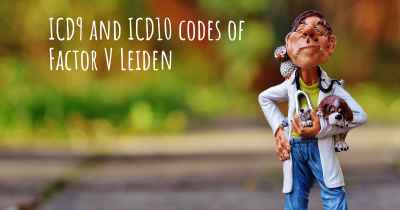What is the history of Factor V Leiden?
When was Factor V Leiden discovered? What is the story of this discovery? Was it coincidence or not?

Factor V Leiden is a genetic mutation that affects the clotting factor V in the blood. It is named after the city of Leiden in the Netherlands, where it was first discovered in 1994 by Dr. R. Bertina and his colleagues. This mutation is the most common inherited cause of thrombophilia, a condition that increases the risk of abnormal blood clotting.
The history of Factor V Leiden can be traced back to the mid-20th century when researchers began studying the causes of thrombophilia. In the 1960s, it was observed that certain individuals had a higher risk of developing blood clots, especially in the veins. However, it wasn't until the 1990s that the specific genetic mutation responsible for this increased risk was identified.
Factor V Leiden is caused by a single point mutation in the gene that codes for factor V, a protein involved in the clotting cascade. This mutation results in a form of factor V that is resistant to degradation by activated protein C, a natural anticoagulant. As a result, clotting factors are not properly regulated, leading to an increased risk of blood clot formation.
The discovery of Factor V Leiden was a significant breakthrough in the understanding of thrombophilia. It provided a genetic explanation for the increased risk of blood clots observed in certain individuals and opened up new avenues for research and treatment.
Since its discovery, Factor V Leiden has been extensively studied to determine its prevalence and clinical implications. It is estimated that about 5% of the Caucasian population carries at least one copy of the Factor V Leiden mutation, making it relatively common.
Individuals who are heterozygous for the mutation (carrying one copy) have a 3 to 8-fold increased risk of developing venous thromboembolism (VTE) compared to those without the mutation. Homozygous individuals (carrying two copies) have an even higher risk, up to 80-fold.
The clinical manifestations of Factor V Leiden can vary widely. Some individuals may never experience any symptoms or complications, while others may develop deep vein thrombosis (DVT), pulmonary embolism (PE), or other clotting disorders. The risk of thrombosis is also influenced by other genetic and environmental factors.
Today, the diagnosis of Factor V Leiden is typically made through genetic testing. This involves analyzing a blood sample to identify the specific mutation in the factor V gene. Genetic counseling is often recommended for individuals who test positive for the mutation, especially those with a personal or family history of blood clots.
Treatment and management of Factor V Leiden depend on the individual's clinical history and risk factors. This may involve lifestyle modifications, such as regular exercise and avoiding hormonal contraceptives, as well as anticoagulant medications in certain situations.
In conclusion, the history of Factor V Leiden dates back to the 1990s when it was first discovered as a genetic mutation associated with an increased risk of abnormal blood clotting. Since then, it has been extensively studied, and its prevalence and clinical implications have been better understood. Genetic testing and counseling play a crucial role in the diagnosis and management of individuals with Factor V Leiden.
Factor V was discovered in 1994 in Leiden Netherlands.
Posted Sep 1, 2017 by Stacy 2650
Factor five is produced by the liver and circulates in the blood, generally inactive until there is a injury to a vessel wall, than specific proteins will be activated in response to the injury.
Not everyone who gets blood clots will have FVL. There are many reason for any person to be at risk for clots, such as, fractures, hormone replacement therapy, surgery, birth control. Those with FVL can just have a greater risk.
Posted Dec 28, 2017 by Barbara 4050
Posted Feb 28, 2019 by [email protected] 100








